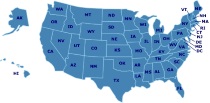Design Your Own
Resources
The Complete Home Learning Source Book : The Essential Resource Guide for Homeschoolers, Parents, and Educators Covering Every Subject from Arithmetic to Zoology
Designing Your Own Classical Curriculum: A Guide to Catholic Home Education
In this book, Laura Berquist offers a curriculum based on the philosophy of the classical Trivium: grammar, logic, and rhetoric. This valuable tools helps home educators craft a liberal arts curriculum that is good for both the soul and the intellect. The material in the book covers grades K-12 and has detailed and practical advice. There is also a section for a high school curriculum and a list of resources.
100 Top Picks For Homeschool Curriculum: Choosing The Right Curriculum And Approach For Your Child's Learning Style
The Ultimate Book of Homeschooling Ideas: 500+ Fun and Creative Learning Activities for Kids Ages 3-12
As a homeschooling parent, you're always looking for new and creative ways to teach your child the basics. Look no longer! Inside this innovative helper, you'll find kid-tested and parent-approved techniques for learning math, science, writing, history, manners, and more that you can easily adapt to your family's homeschooling needs. And even if you don't homeschool, you'll find this book a great teaching tool outside the classroom. You'll discover fun and educational activities for kids ages 3 to 12, including how to:
·Create maps based on favorite stories, such as Treasure Island or The Wizard of Oz
·Make letters out of French fries as an alphabet learning aid
·Explore architecture by building igloos, castles, and bridges with sugar cubes and icing
·Review spelling words by writing them on the sidewalk with chalk
·And many more!
This comprehensive collection of tried-and-true—and generally inexpensive—ideas provides the best-of-the-best homeschooling activities that can be done anywhere, anytime, and by anyone.
Tips & Ideas for Self-Designed Curriculum
Eclectic Homeschooling
Design Your Own Preschool Curriculum
Support on the Web
Classically Eclectic
Mother of Divine Grace Families
Designing Your Own Classical Curriculum Families
Featured Resources
As an Amazon Associate, we earn from qualifying purchases. We get commissions for purchases made through links on this site.








